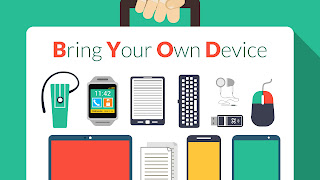Twitter Feed
US Army Cloud Computing Class at Ft. Gordon, GA
A few weeks ago I had the distinct pleassue of teaching yet another US Army cloud computing class. This time the venue was Ft. Gordon, GA and the students definitely…
78 Agency Services Identified for Cloud Transition
The Office of Management and Budget recently released a list of 78 projects slated for transition to cloud over the next year. The most common application, according to a FierceGovernmentIT,…
NGA Sets GEOINT Strategic Direction with Earth Builder
Last month Google and the National Geospatial Intelligence Agency started sharing details about their “GEOINT on Demand” collaboration. The project, named Earth Builder, was built specifically to enable NGA to…
Teleology Systems Introduces CloudeFX at DoDIIS
Next week at DoDIIS, NJVC will be showcasing a few of our government cloud computing partners. One of the most exciting of these is the Cloud Service Orchestration Framework by…
Cloud Computing Highlighted at DoDIIS 2011
Are you going to DoDIIS? Schedule for May 1-5, 2011 in Detroit, Michigan, the conference highlights the Defense Intelligence Agency’s (DIA) commitment to developing and maintaining secure and reliable networks for…
Washington DC a Cloud Computing Trendsetter!
A TechJournal South article last week named Washington, DC as a leading trendsetter in cloud computing. Citing a Microsoft sponsored survey, conducted by 7th Sense research, D.C. was highlighted as particullarly receptive…
Melvin Greer Cited by IBM for Cloud Computing Innovation
Congratulations to my good friend Melvin Greer for being awarded IBM’s first ever ACE Award!! “Melvin Greer, Lockheed Martin Senior Fellow has won IBM’s first ever Awarding Customer Excellence (ACE)…
“GovCloud: The Book” Launched at National Press Club Event
As many of you know, today marked the official launch of my first book – GovCloud: Cloud Computing for the Business of Government. Today’s venue was the National Press Club…
“Cloud Musings on Forbes” Launched!!
Today I published my first post on Forbes.com!! At the invitation of Bruce Upbin, Forbes.com editor, I will be contributing posts monthly. I see this not only as an honor,…
Tech America and INSA Form Cloud Computing Advisory Groups
Last week TechAmerica announced the formation of a “cloud computing commission” to advise the White House on the current plans to steer more than $20B worth of IT services toward…
- Increased employee mobility (63%), satisfaction (56%) and productivity (55%) dominate as the top drivers of BYOD. These employee related drivers are considered more important than reduced costs (47%).
- Security (39%) and employee privacy (12%) are the biggest inhibitors of BYOD adoption.
- 20% of surveyed organizations have suffered a mobile security breach, primarily driven by malware and malicious WiFi.
- Security threats to BYOD impose heavy burdens on organizations’ IT resources (35%) and help desk workloads (27%).
- Despite increasing mobile security threats, data breaches and new regulations, only 30% of organizations are increasing security budgets for BYOD in the next 12 months and 37% have no plans to change their security budgets.
- 72% – Data leakage/loss
- 56% – Unauthorized access to company data and systems
- 54% – Downloading of unsafe apps or content
- 52% – Malware
- 50% – Lost or stolen devices
- 49% – Vulnerability exploitation
- 48% – Lack of control on endpoint security
- 39% – Infrequent software updates
- 38% – Compliance
1. Create your policy before procuring technology: To effectively use mobile device management (MDM) technology for employee owned devices Policy must precede technology. Also note that these policies will have broad corporate-wide implications for IT, HR, legal, and security.
- Mobile device management
- Application security assessments
- Application testing services
- Application source code security assessments; and
- Embedded device security.
This post was brought to you by IBM Global Technology Services. For more content like this, visit ITBizAdvisor.com.
( Thank you. If you enjoyed this article, get free updates by email or RSS – © Copyright Kevin L. Jackson 2017)
Cloud Computing
- CPUcoin Expands CPU/GPU Power Sharing with Cudo Ventures Enterprise Network Partnership
- CPUcoin Expands CPU/GPU Power Sharing with Cudo Ventures Enterprise Network Partnership
- Route1 Announces Q2 2019 Financial Results
- CPUcoin Expands CPU/GPU Power Sharing with Cudo Ventures Enterprise Network Partnership
- ChannelAdvisor to Present at the D.A. Davidson 18th Annual Technology Conference
Cybersecurity
- Route1 Announces Q2 2019 Financial Results
- FIRST US BANCSHARES, INC. DECLARES CASH DIVIDEND
- Business Continuity Management Planning Solution Market is Expected to Grow ~ US$ 1.6 Bn by the end of 2029 - PMR
- Atos delivers Quantum-Learning-as-a-Service to Xofia to enable artificial intelligence solutions
- New Ares IoT Botnet discovered on Android OS based Set-Top Boxes


